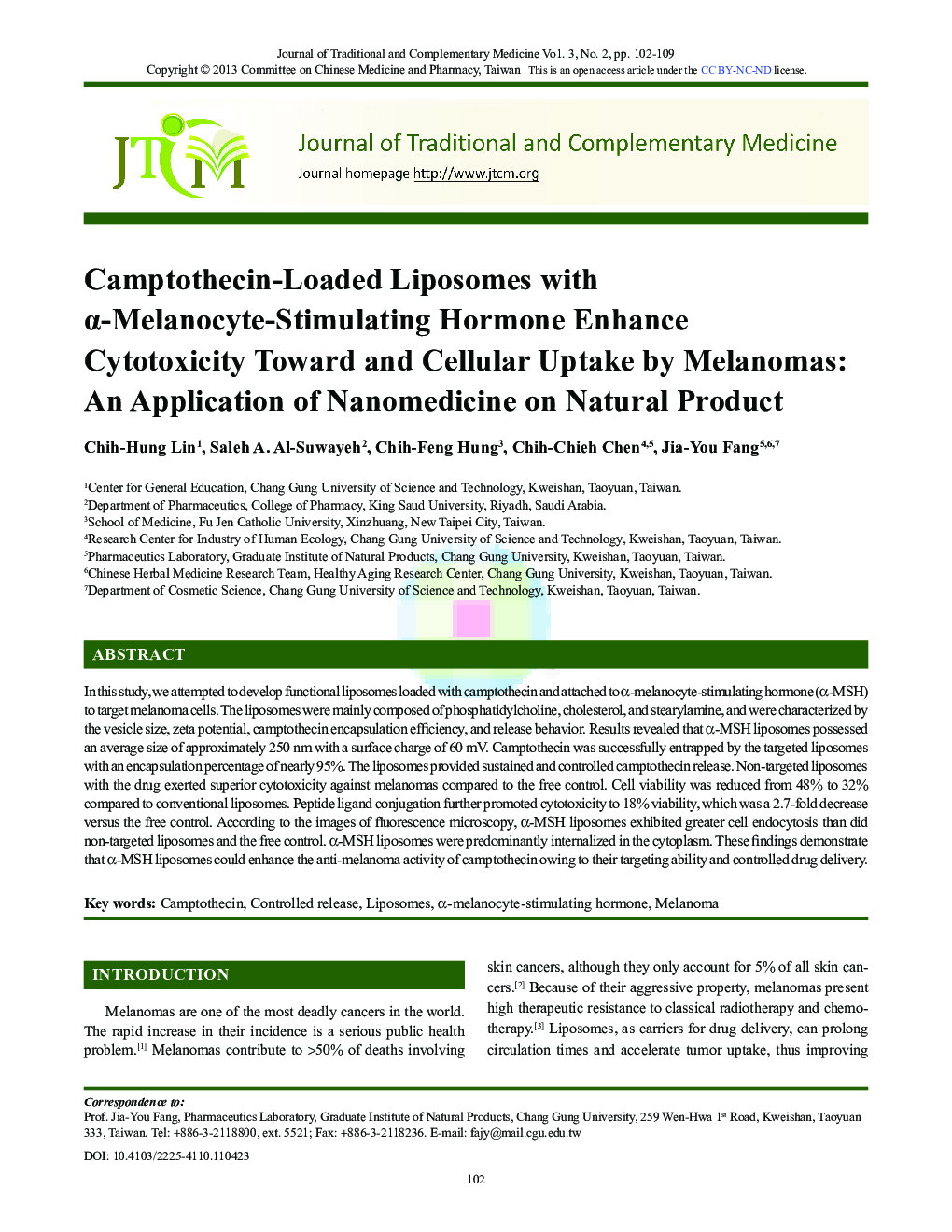| Article ID | Journal | Published Year | Pages | File Type |
|---|---|---|---|---|
| 3099829 | Journal of Traditional and Complementary Medicine | 2013 | 8 Pages |
ABSTRACTIn this study, we attempted to develop functional liposomes loaded with camptothecin and attached to α-melanocyte-stimulating hormone (α-MSH) to target melanoma cells. The liposomes were mainly composed of phosphatidylcholine, cholesterol, and stearylamine, and were characterized by the vesicle size, zeta potential, camptothecin encapsulation efficiency, and release behavior. Results revealed that α-MSH liposomes possessed an average size of approximately 250 nm with a surface charge of 60 mV. Camptothecin was successfully entrapped by the targeted liposomes with an encapsulation percentage of nearly 95%. The liposomes provided sustained and controlled camptothecin release. Non-targeted liposomes with the drug exerted superior cytotoxicity against melanomas compared to the free control. Cell viability was reduced from 48% to 32% compared to conventional liposomes. Peptide ligand conjugation further promoted cytotoxicity to 18% viability, which was a 2.7-fold decrease versus the free control. According to the images of fluorescence microscopy, α-MSH liposomes exhibited greater cell endocytosis than did non-targeted liposomes and the free control. α-MSH liposomes were predominantly internalized in the cytoplasm. These findings demonstrate that α-MSH liposomes could enhance the anti-melanoma activity of camptothecin owing to their targeting ability and controlled drug delivery.
